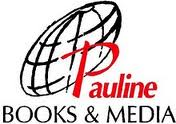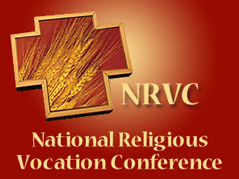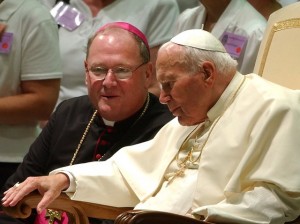 Last Friday, the Jamaica Plan (NY) Gazette published an upbeat article on the Daughters of St. Paul, whose motherhouse is located in Jamaica Plain. The Daughters are known for their use of the media in spreading the Catholic faith.
Last Friday, the Jamaica Plan (NY) Gazette published an upbeat article on the Daughters of St. Paul, whose motherhouse is located in Jamaica Plain. The Daughters are known for their use of the media in spreading the Catholic faith.
The article, entitled “High-tech nuns living on the edge (of JP),” highlights many of the Daughters’ projects, including their award-winning “Ask a Catholic Nun” page on Facebook, which has 13,745 fans.
What particularly struck me, however, was the discussion of the Daughters’ expansion into the world of smartphone apps:
“There is a whole new audience, a whole new space to share with God,” Sister Kathryn said. “People can snatch a few moments here and there to commune with God,” she added, showing off their latest app, “Beginning Contemplative Prayer,” a companion app to Sister Kathryn’s book of the same name.
The app boasts eight 25-minute audio prayers, prayer ideas and a five-week personal plan for growth in contemplative prayer, which includes a different morning, midday, and evening prayer for each week. Sister Kathryn has written several books, mostly self-help books, for Pauline Books, their publishing arm.
Another of their apps features the Rosary being prayed out loud. It has an email function that allows the user to let others know that a prayer has been offered on their behalf.
“We pray while we create these things and we pray for the people who will receive them,” said Sister Patricia, who works on the apps.
 In the 1980 film Oh, God: Book II, 11-year-old Tracy Richards believes that God is talking to her. In fact, God (played by George Burns) wants Tracy to tell everybody she knows that he is real. So she does. She drafts a slogan and message, just two words, is conclusive and clear:
In the 1980 film Oh, God: Book II, 11-year-old Tracy Richards believes that God is talking to her. In fact, God (played by George Burns) wants Tracy to tell everybody she knows that he is real. So she does. She drafts a slogan and message, just two words, is conclusive and clear: Some interesting vocation news items from this past week:
Some interesting vocation news items from this past week: While this vocation blog focuses primarily on vocations to the priesthood and religious life, I thought today I would introduce our readers to the work of Anthony Buono, who for many years has been a leader in assisting those who believe that God is calling them to the vocation of Christian marriage.
While this vocation blog focuses primarily on vocations to the priesthood and religious life, I thought today I would introduce our readers to the work of Anthony Buono, who for many years has been a leader in assisting those who believe that God is calling them to the vocation of Christian marriage. When my daughter Virginia was about a year old, I twice received calls that she was unconscious and being rushed to the hospital. (I hope you fathers out there never receive such a call.) Thanks be to God, on both occasions, by the time I arrived at the emergency room, she was awake and fine.
When my daughter Virginia was about a year old, I twice received calls that she was unconscious and being rushed to the hospital. (I hope you fathers out there never receive such a call.) Thanks be to God, on both occasions, by the time I arrived at the emergency room, she was awake and fine.
 I just noticed that
I just noticed that  My men’s group has been reading
My men’s group has been reading 
 In the Fall 2010 issue of
In the Fall 2010 issue of  Irish Dominican Father Gerard Dunne
Irish Dominican Father Gerard Dunne